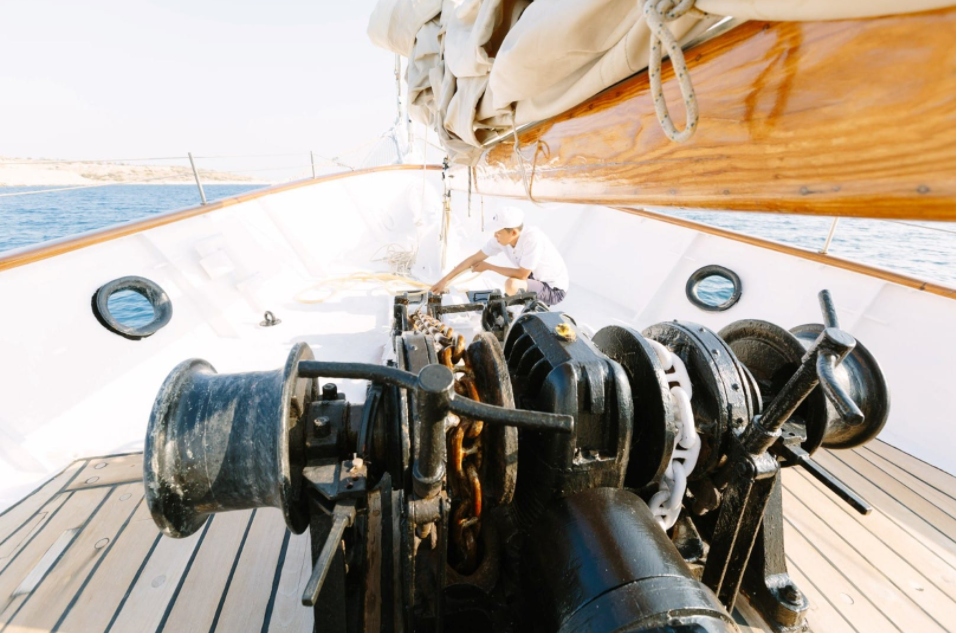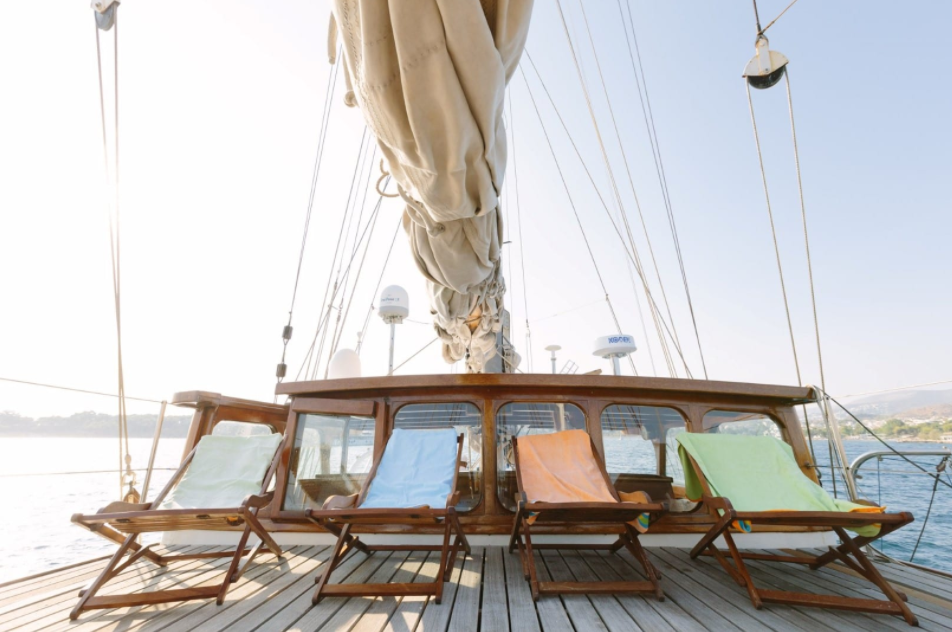THROWBACK IN HISTORY
Sir Winston Churchill was designed by Camper & Nicholson and built in 1966 to compete in the Tall Ships Race. The patron of the project was Prince Philip, Duke of Edinburgh. Public donations partly funded construction of the ship, and the Sail Training Association raised about half the needed money.
The vessel was named after Winston Churchill, wartime leader and twice Prime Minister of the United Kingdom; Churchill had died the year before his namesake’s construction. Her rig was deliberately designed to incorporate all the main types of sail. In November 1965, Sir Winston Churchill toppled over onto her starboard side whilst she was being fitted out. All three masts were broken. The accident happened a week before she was due to be launched by Princess Alexandra.
On January 1, 1967, an open porthole near the waterline allowed the rising tide to flood the ship at her berth in Southampton, Hampshire. She was pumped out and refloated the same day. On 26 July 1967, she ran aground at ‘Holyhead Harbor’, Anglesey but was refloated after four hours.
In 1968 a sister ship, Malcolm Miller was launched. Sir Winston Churchill differed from Malcolm Miller in having round topped cabin doors as opposed to square topped doors. A further difference was that the Sir Winston Churchill was trimmed slightly lower at the stern – because the concrete ballast had run aft slightly when it was poured during her construction. This difference in trim can be seen in most photographs of the two ships together.
Sir Winston Churchill entered the 1979 Tall Ships Race with an all-female crew. In 1976, the vessel took part in a transatlantic race to celebrate the Bicentenary of the United States Declaration of Independence.
On 27 July 1981, she ran aground 4 nautical miles (7.4 km) off Great Yarmouth, Norfolk with 39 female trainees on board. In 2000, Sir Winston Churchill was replaced in service by Prince William and sold by her owners, the Tall Ships Youth Trust. Her last voyage for the Tall Ships Youth Trust ended on 2 December 2000 at Portsmouth.
Sir Winston Churchill was sold to a company based in the Isle of Man. Initially she was used as a sail training ship, with a reduced capacity of 20 trainees instead of the 39 (3 watches of 13, Fore, Main & Mizzen) that the Tall Ships Youth Trust carried. She was totally refitted and re-engined in 2002 with twin Iveco diesel engines replacing her 270 horsepower (200 kW) Ford Mermaid engines. She was originally fitted with 2 off 654 Perkins engines for propulsion and 2 off 499 for power generation.
SIR WINSTON CHURCHILL'S CREW
We value excellent customer service above all else and the standard of our Sail Ionian team reflects this commitment.
Our staff are the people you speak to at the Boat Shows, on the telephone and on email when you book your holiday. The same people will greet you when you arrive in Greece.
We only hire highly qualified and experienced skippers and engineers who all take great pride in our work.
Sir Winston Churchill’s crew is trained to the higher standards offering safe and unforgettable sailing experience to our esteemed guests; available around the clock to meet the needs and desires of all guests, let it be on board or on shore; whilst at the same time an experienced chef will prepare traditional and contemporary dishes to satisfy all tastes and dietary requirements.
Salon & Cabins
The salon comprises a formal dining room, a comfortable lounge area and a separate coffee and games corner. All interior spaces, with beautifully inlaid teak and ash floor, are finished in mahogany and wild cherry, with watercolors and pastel furnishings that combine to evoke the elegant ambience of the 1930s. A traditional companionway leads up to the spacious staterooms.
The six spacious cabins, made of traditional woodwork, are decorated in such a way that even without the bed settings, the ambience is serene and delightful. The Master and VIP cabins feature Queen-size beds. There are two standard Double cabins with sofa (one of which can be joined by a division with bow Twin cabin), and two Twin cabins, all fully air-conditioned, with en-suite facilities and hi-fi audio.
The Bridge & Deck
While the design, rigging and sails are those of an authentic traditional Tall Ship, the bridge is equipped with the most up-to-date satellite navigation and communication hardware. Two new powerful Iveco engines mean a 12-knot cruising speed in any weather, while the skilled and experienced crew guarantee your safety and comfort at all times.
The huge deck space, composed of thick teak planks, includes a Bimini-sheltered area on the foredeck for open-air cocktails and dining, while the entire deck forward of the bridge is available for sunbathing.
THE INTERIOR







The Dock





